1996: The beginning of the end
Posted by Huw,
In keeping with this week's predominantly Technic theme, today's #ThrowbackThursday takes a look back at the introduction of studless beams and the transition from the studded to studless Technic eras.
It all started back in 1996, 20 years ago. Who at that time would have predicted that the introduction of a innocuous looking studless angular beam would lead to the phasing out of the traditional Technic building system and end up with what we have today. Probably not even anyone in LEGO...
LEGO started introducing various studless half-width lift-arms and so on in 1989 which enabled more complex and compact mechanisms to be produced but it wasn't until 1996 that the first full-width studless beam was made.
1996 - first studless beam
I think it's fair to say that the first studless beam, 6629: Technic Angular Beam 4X6, was produced specifically for the flagship set of 1996: 8480 Space Shuttle. The set contained ten in white which formed the distinctive shape of the shuttle bay doors. It's a shape that would have been impossible to do with existing elements.
Other uses were found for it in several other sets released that year, including in 8443 Pneumatic logger which uses them to good effect for the cab window frame and the end of the arm, and the rather interesting 8244 Convertibles which consisted of a number of modules that could be connected in different ways to produce a wide variety of vehicles.
1997
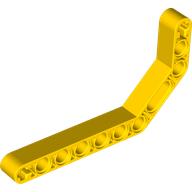 The following year the second angular beam was produced: 32009: Double Angular Beam 3X7 45°. Again, it was probably the flagship model of the year, 8479 Barcode Multi-Set that led to its development, for the frame of the truck's tipper, although it found its way into other 1997 sets.
The following year the second angular beam was produced: 32009: Double Angular Beam 3X7 45°. Again, it was probably the flagship model of the year, 8479 Barcode Multi-Set that led to its development, for the frame of the truck's tipper, although it found its way into other 1997 sets.
Looking back at pictures of the 1997 releases it's clear that this part and the 4x6 angular beam were used primarily for cosmetic purposes rather than for the main frame or bodywork.
1998
No new studless beams were introduced this year but it was the first year that completely studless models were released. In fact, most of the small sets released in 1998 lacked studs.
1999
In 1999 an 'angular' beam, with a 90 degree angle, was introduced: 32140: Technic Ang. Beam 4X2 90 Deg. It's hard to pinpoint which set would have led to its development because most of the large sets released in 1999 made use of it although it wasn't used in abundance.
2000 - first straight studless beam, beginning of the transitional period
Until now studless beams had been used sparingly and mainly for cosmetic purposes, in larger models at least but in 2000 we started to see them more widely used, particularly in the widely-derided Competition sets.
This was due in part to the introduction of the first straight ones, in lengths 5 and 15. (32316: Technic 5M Beam and 32278: Technic 15M Beam)
Two more angular beams were introduced this year as well, 32271: Technic Angular Beam 3X7 and 32348: Technic Angular Beam 4X4.
I would say that this year marked the start of the 'transitional' phase between the two building systems. Large models were still predominantly constructed using studded beams, particularly the chassis, but studless ones were being used more and more.
2001
In 2001 four more were introduced: 3, 7 and 9 straight beams, and another right angle one: 32523: Technic 3M Beam, 32524: Technic 7M Beam, 40490: Technic 9M Beam and 32526: Technic Ang. Beam 3X5 90 Deg.
2002
The first even length straight beam (and probably the last) was introduced in 2002 along with a 11 length one, 43857: Technic 2M Beam, 32525: Technic 11M Beam.
2003 - start of the studless era
It's difficult to pinpoint exactly when the studded beam era ends and the studless one begins and it's something that's open for discussion. However I'm going to say it was 2003 because, thanks to the introduction of a wide variety of studless beams in the years leading up to it, it now was possible, for the first time, for the flagship model of the year, 8455 Back-Hoe, to be built entirely studless.
By this point in time the new system was now comprehensive enough to enable the old-style of Technic building to be ditched completely. It took eight years, and I don't believe the end result could have been foreseen at the beginning of the journey. It would be interesting to ask someone in LEGO about it.
2004-2016
To complete the story, a 13 length beam was introduced in 2004 (41239: Technic 13M Beam) and a length one beam, little more than a tube, in 2015 (18654: Beam 1X1).
Studded beams are now considered System parts and are still used extensively in non-Technic sets, of course. They still find their way into Technic sets from time to time too: this year's Volvo EW160E, for example, makes good use of them for its arm.
It's been said that studless building is like a game of Chess: you need to be thinking several steps ahead all the time. I think that's why relatively few people have truly mastered the system to produce models that are on a par with official ones. I know I certainly haven't.
Whatever, we won't be seeing a return to what some regard as the 'good old days' of Technic any time soon...
Do you like the studless system? Have I missed any pivotal points in its development?
57 likes
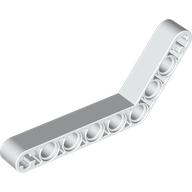
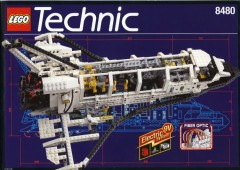
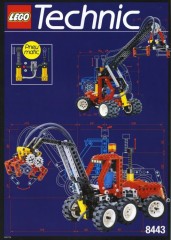

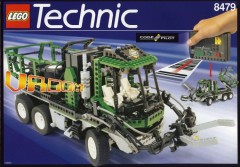



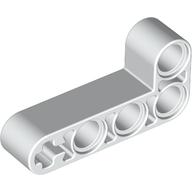
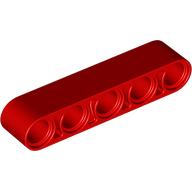
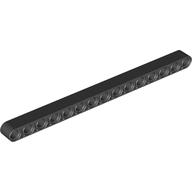
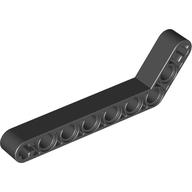
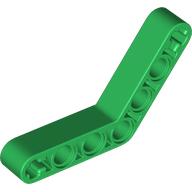
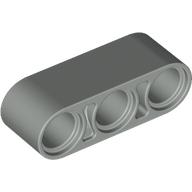

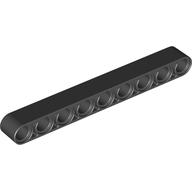
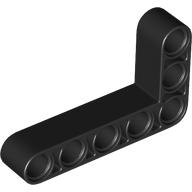
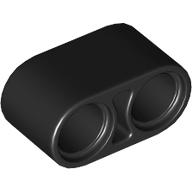
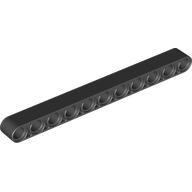

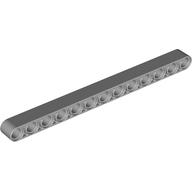
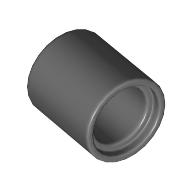
35 comments on this article
I was still in my Dark Age at that time!
By the way, as I came back to Lego in 2009, I'm still struggling with studless approach.
In my opinion, it's much more elegant than with studs but it's more complicate to design something.
Alot more flex in studless beams next to each other, you can feel the bending when you pick up a unimog or arocs in the middle.
While I do like many of the modern studless sets they do seem more like plastic Erector sets instead of Lego to me.
I wish they would to back to the "classic" studded pieces, or at least hybrid sets.
It could be added that in contrast to the studded beams the studless beams are not made from ABS (or at least a different kind) but from a more flexible material, this also providing part of the flexibility - and robustness - of studless models.
It took me a long time to realise that the 1L width by 1L height of a studless beam meant that you could think of your Technic model as a 3D grid, rather than deal with the difference in hole spacing when fixing beams vertically to studded horizontal beams. Now I can lay out a drive train of cogs and axles and have half a chance of getting beams in place to support them!
The studless system is very hard to combine with traditional pieces. They are more or less two distinct universes. So when you build Technic nowadays you cannot really make use of your wealth of system pieces. I hated the studless system.
I wasn't around for anything resembling studded Technic. But looking back on it, I'm not a fan... the models just don't look as good. Well, most of them anyway, but one certainly couldn't accomplish anything like 42040 or 42052 with that... although, I would be very pleased if they made Technic spaceships. I mean, come on! A space shuttle made today would be incredible!
Who derides the Competition sets?! I bloody loved those when I was a kid and so did all my friends. Boring adults and their display sets ;)
Let's just say they were not well received by adult fans at the time. But, clearly, they were a hit with the target audience and perhaps introduced many to Technic which can't have been a bad thing.
"It took eight years, and I don't believe the end result could have been foreseen at the beginning of the journey."
Perhaps not at the very beginning, but you saw it coming pretty early :)
http://news.lugnet.com/technic/?n=471&t=i&v=b
I think there might have been even earlier premonitions too, but my memory is not what it used to be.
Pros and cons on both sides but overall a change for the better. Modern sets are much more sophisticated, although the lack of rigidity in larger models has been a problem (the new 5x7 frames should solve this) I tend to still build large chassis in studded, with studless sub-systems and they work together well.
Studless beams are still definitely compatible with the traditional system parts. Most SHIP's use a bunch of studless beams for the internal structure within a shell of traditional plates and bricks for the aesthetics and details.
I am a fan of the studless elements. Technic has always utilized very different building techniques from System LEGO sets, and as such it makes sense to have elements that suit those techniques.
As a kid I had 8440 Formula Flash, a great technic set. I spent a lot of time building a full body for it with a raised monocoque to help protect my technic figures head. It looked like a great systems set and work like a great technic set. I always wanted 8480 Space Shuttle but I would have like to do the same and cover it with plates for a more complete look but the new studless part would have made this impossible to do without major changes. I then missed the changed to studless but since rediscovering Lego I have only bought two technic sets which tells you what I think of studless. My favourite use of studless is the sails on MetalBeard's Sea Cow.
I didn't really notice the progression until it had happened - loved the Micro Technic sets, then looked up one day and realised I hadn't seen a studded beam in ages...! I do prefer studded beams and the look of the old sets, but then, I was never a big Technic MOCer...
You have better memory than I, @mkoesel. I have no recollection of the prediction, but as it turns out, for Technic sets at least, I was right!
Thanks for digging that out. It's always fun looking back at the Lugnet forums.
I had 8205 Bangee Blaster. I wasn't aware it was one of the very first sets with beams. It was just before my entering DA in 1999.
I didn't like the look of studless sets and I'm still struggling with it. I don't mind beams, but those awful panels... well, they remind me of Bionicle, which I hate with a passion.
I recently built the A-Wing vs Darth Vader's TIE Fighter set, and the TIE has a section for supporting the wings that feels like you're building a good old fashioned studded Technic set. It's only five steps out of the entire model, but it made me miss the good old days :(
I agree that 2000 was the beginning of the transitional period. I think that it's worth noting that the first sets using 100% modern Technic elements were the 8000 - 8003 Star Wars droids that came out that same year.
I never had any of the sets before the introduction of the new technic style beams, and I've built with some older technic sets, but they are sooooo very different now. The perfect geometry really helps the builder, and looks very clean. Newer Technic sets look quite a bit like erector sets, which ammuses my parents and their parents.
Having had a couple of Technic sets back in the '80s, and having now built a couple of the new ones, it's very obvious to me that not a single one of today's Technic sets could be built with the old studded system. It was just too inflexible, and I remember being frustrated as a child, not being able to make some connections because you had to take into account the extra height and width of the brick.
Having said that, it's taken me four years since getting back into Lego to fully accept the studless system. Four years. I think the breakthrough came when I built the sandcrawler, and I realised that it's a great system for building a structurally strong frame.
I think you forgot to mention 8448, the best example of Best of both worlds; a mostly studded chassis (with some studless reinforcing) and a mostly studless body.
I think it's interesting that initially studless beams were used in mostly studded models for cosmetic purposes while only a few years later studded beams were used in mostly studless models for cosmetic purposes. In a good few studless sets there's the odd studded beam to attach grilles, lights etc made from regular bricks.
Of course studded beams were also used often for attaching gear racks, the last remaining old-school Technic part.
"It would be interesting to ask someone in LEGO about it."
Didn't you have that chance a few weeks ago at the fansite event in Billund?
It's a lot easier to clean the new studless parts..
Regardless of studs vs studless I would love to see the panels go away and a return to the more skeletal structure. The best part about Technic for me is all of the moving parts and it is a shame that so many modern sets cover all of this up.
The Creator line is for models that look like the real thing. The Technic line should be all about the functional engineering.
When were panels first introduced to the line?
I have many sets both from the studded era and the current non studded era. new technic sets look far more sleek and elegant and look much more realistic, I also feel it has allowed models to function more smoothly and more like the real thing. Studded technic sets certainly look very primitive and dated now in comparison. Studless sets also seem to have much higher parts counts than their studded predecessors of similar size and functions.
easier to paint studless too, eh Paul? ;)
I have grown up with studded Technic, and came out of my dark ages after studless had been introduced. As a general fan of Technic I must say I like both methods.
Studded models have that nice "classic" feel to me and bring back many happy memories of the "good old days". Studless models indeed seem much more "modern" and sophisticated. Yet having said that, something like my 8880 Supercar also seems highly sophisticated, even by today's standards.
Speaking of which, I would disagree with Huw's following statement from the article:
"The set contained ten in white which formed the distinctive shape of the shuttle bay doors. It's a shape that would have been impossible to do with existing elements."
8880 is a prime example showing that shapes like the shuttle bay doors could have easily been accomplished without that new part. Just look at all the angles of 8880 and how they were achieved without any studless parts.
They only thing I really like more about the old studded sets is that you can see the mechanisms much better than with the current models where most of it is hidden behind panels - the GT3 being the worst example. Even Jang made quite a point about that fact in his review of that set.
8880 extensively uses hinge plates. To create effective shapes using hinges, you need the two halves anchored at both ends, otherwise the hinge would move all over the place.
The Shuttle bay doors are only anchored on one side, and the supports have to move as the doors open and close, hence why an angled beam would be necessary.
Regarding the 8480 shuttle bay doors - they could be done in system bricks but the mechanism that opens them relies on light weight. The liftarms are needed for this.
True, but those hinges are quite sturdy, especially when they are on both sides of the beams like on 8880. They don't really move much, and certainly not "all over the place". Plus, with a little creativity, other methods of constructing such a mechanism would be possible. But of course, sometimes constructing a new part might be easier ;-)
Especially when Lego probably already saw the future in studless Technic back then anyway.
@duq, "initially studless beams were used in mostly studded models for cosmetic purposes while only a few years later studded beams were used in mostly studless models for cosmetic purposes."
That's an excellent observation and the reason why the Volvo uses them.
> Didn't you have that chance a few weeks ago at the fansite event in Billund?
Andrew who I interviewed had only been in the Technic team a few years so probably would not have known.
BTW, my interview with him will be published on Sunday. I'll explain the delay then.
A combination of both will be great.
The end of studded LEGO Technic was the end of my joy in building Technic creations. Everything became more difficult, and less fun. Except for buying the occasional "flagship" set, I've not returned to Technic since then. For me, this was definitely a change for the worse.
I agree that studless sets look more "elegant" and "finished" but my heart belongs to studded. 8862 is one of my favourite sets of all time. 8880 is superb too. Like others, I've bought a few flagship, studless technic sets - and they're great - but I prefer studded somehow. Maybe it's because it's what I grew up with.
I think the shift to studless beams has been a positive one overall. Studless beams are a lot more versatile IMO since they don't need so much extra clearance when they are hinged at unusual angles, nor do the sharp corners result in such an uneven, crinkly look when two beams are joined at those sorts of angles. The shift from primarily studded builds to primarily studless ones happened over the course of my childhood, and even back then I was struck by how much nicer-looking and less constraining studless builds were.
I don't really get people's concerns that studless Technic is not interchangable with regular LEGO, since studded beams and Technic pins with studs are still incredibly common and make joining the two building systems easy as pie. Sure, this isn't "pure" studless building, but joining Technic and System connections is the entire reason these studded pieces still exist! So when you need to join the two building systems it's a waste not to take advantage of them.
I also have to admit, while I love the technical challenge of building modern Technic sets, the subject matter in them tends to feel extremely boring to me compared to 90s and early naughts series like Competition which were a lot more imaginative and not strictly constrained to real-life vehicles. We still get some of that sort of imagination in themes like Bionicle and Mindstorms, but Technic itself has basically done away with any sort of sci-fi subject matter, which is a bit sad for me.